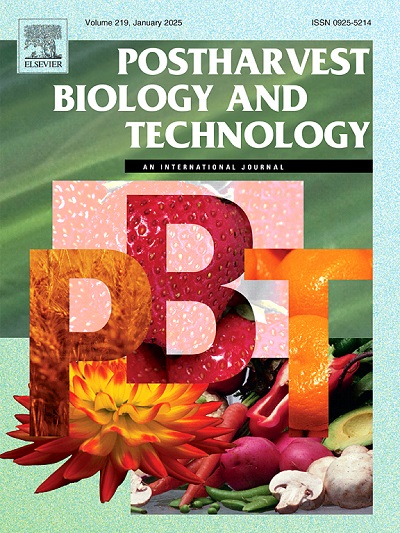Integrative transcriptomic and metabolomic analyses reveal the mechanisms behind acidity differences in the pulp of fresh longan cv. ‘Fuyan’ and ‘Dongbi’ during storage
IF 6.4
1区 农林科学
Q1 AGRONOMY
引用次数: 0
Abstract
To understand the underlying mechanism of the organic acid accumulation of postharvest longan fruit, integrative analyses of transcriptome and metabolome were performed in the fruit of two longan varieties (‘Fuyan’ and ‘Dongbi’) with different storability. Compared with ‘Dongbi’ longan, the ‘Fuyan’ cultivar exhibited higher fruit respiration rate, pulp breakdown index, and TA content, but a lower TSS content during storage. Targeted metabolomic analysis revealed that, in comparison to ‘Dongbi’ longan, during storage, ‘Fuyan’ longan accumulated higher levels of four organic acids, including 3-phenyllactic acid, lactate, succinic acid, and oxaloacetate. Transcriptomic analysis showed that DEGs between ‘Fuyan’ and ‘Dongbi’ longans were primarily enriched in respiration metabolism pathways, including glycolysis, gluconeogenesis, and the TCA cycle. Additionally, WGCNA identified hub genes involved in these metabolic pathways. RT-qPCR analysis indicated that the expression of related genes (DlLDH, DlACL, DlPEPC, DlMDH, DlAST and DlSCS) was upregulated in ‘Fuyan’ longan compared with ‘Dongbi’ longan during storage. These findings suggest that the increase in longan pulp acidity is attributed to organic acid accumulation and an enhanced respiration metabolism, resulting in the poor storability of ‘Fuyan’ longan during storage.
求助全文
约1分钟内获得全文
求助全文
来源期刊

Postharvest Biology and Technology
农林科学-农艺学
CiteScore
12.00
自引率
11.40%
发文量
309
审稿时长
38 days
期刊介绍:
The journal is devoted exclusively to the publication of original papers, review articles and frontiers articles on biological and technological postharvest research. This includes the areas of postharvest storage, treatments and underpinning mechanisms, quality evaluation, packaging, handling and distribution of fresh horticultural crops including fruit, vegetables, flowers and nuts, but excluding grains, seeds and forages.
Papers reporting novel insights from fundamental and interdisciplinary research will be particularly encouraged. These disciplines include systems biology, bioinformatics, entomology, plant physiology, plant pathology, (bio)chemistry, engineering, modelling, and technologies for nondestructive testing.
Manuscripts on fresh food crops that will be further processed after postharvest storage, or on food processes beyond refrigeration, packaging and minimal processing will not be considered.
 求助内容:
求助内容: 应助结果提醒方式:
应助结果提醒方式:


